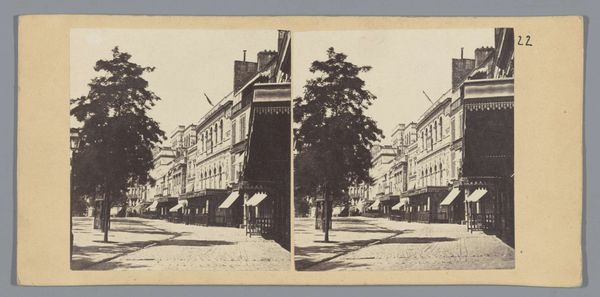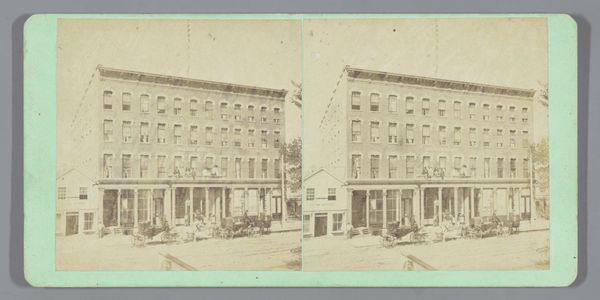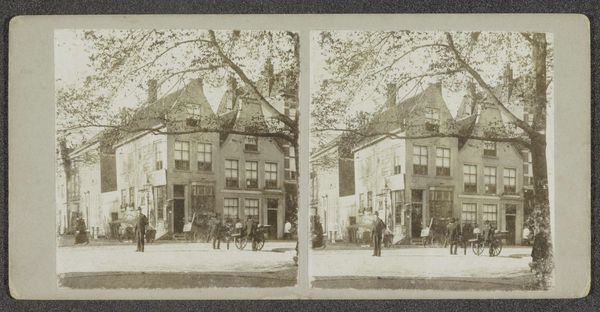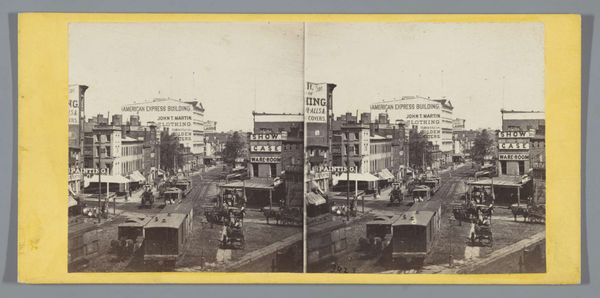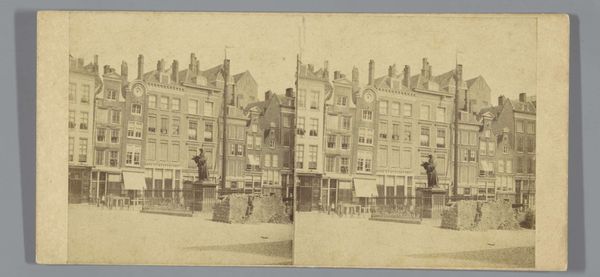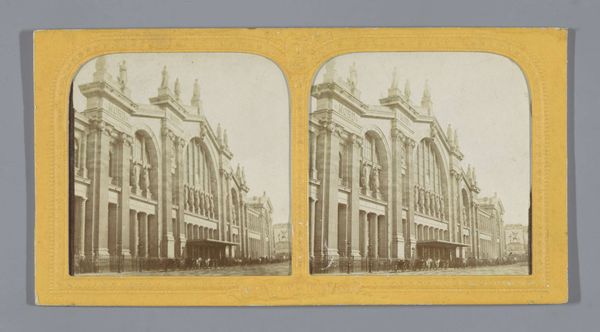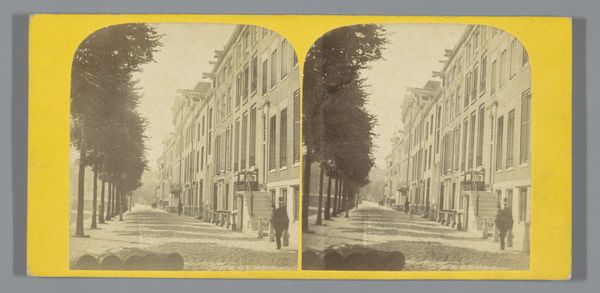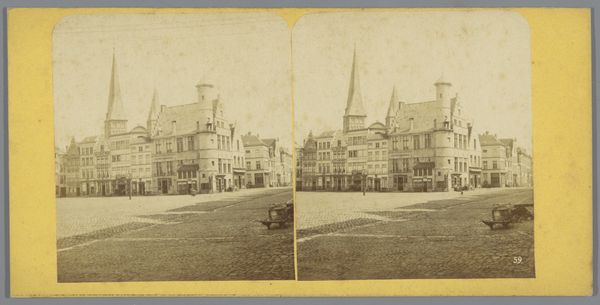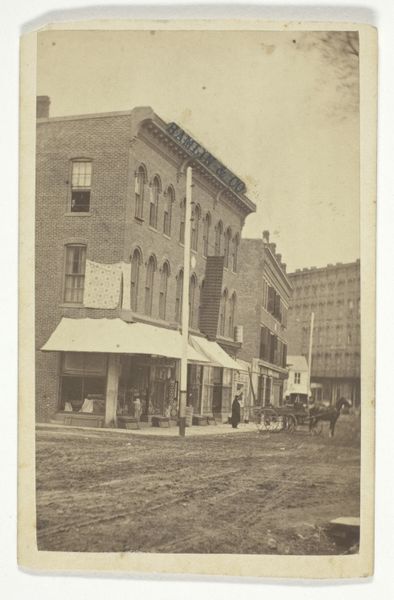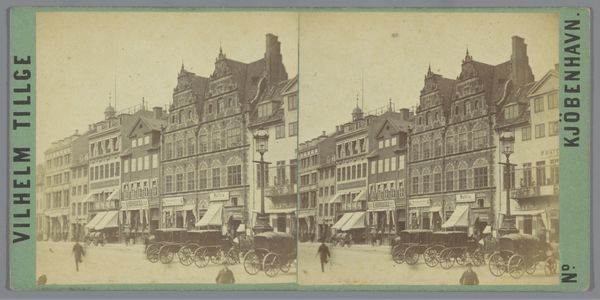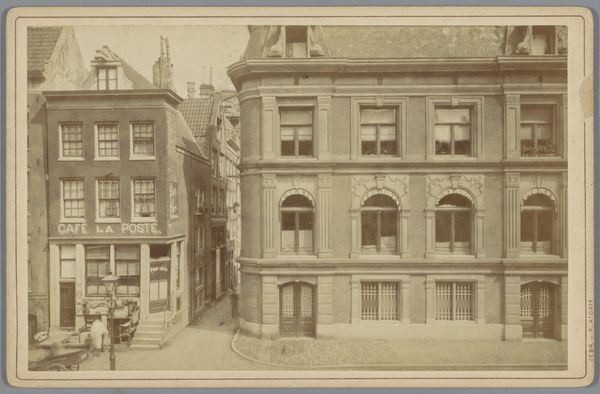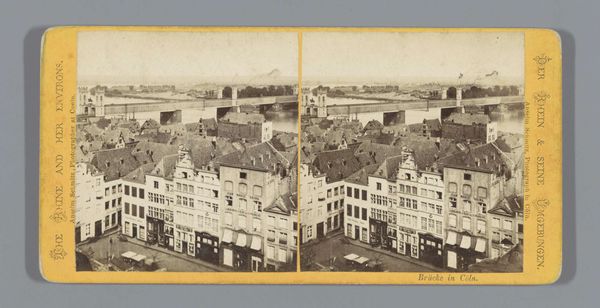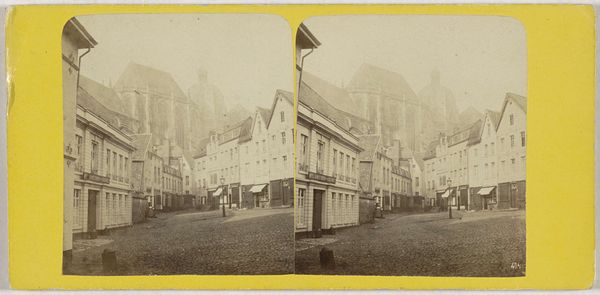
print, photography
# print
#
street-photography
#
photography
#
cityscape
#
street
Dimensions: height 85 mm, width 170 mm
Copyright: Rijks Museum: Open Domain
Curator: Looking at this print by Minshull & Hughes, "Huizen aan Bridge Street te Chester," created sometime between 1850 and 1880, one is struck by the rather rigid architectural patterns on display. Editor: I immediately notice how this street scene is composed; it’s rigidly symmetrical. The play of light and shadow enhances this geometrical organization, giving the entire image a cool and restrained emotional tone. Curator: Indeed, that structural clarity speaks volumes about Victorian society’s burgeoning commercial sector and urban development. Each shop front tells a story about consumer culture and the rigid societal norms upheld within Chester. These buildings weren’t merely functional; they symbolized civic pride and economic stability. Editor: Note the masterful manipulation of tonal values achieved through the printmaking process. The artists captured such precision of detail; for instance, how they rendered the textures of brick and mortar and balanced them against smooth storefront windows and shop signage is just fascinating! Curator: What interests me further are the subtle class markers captured within. Horse-drawn carriages speak to a certain degree of affluence, while the clothing and bearing of the visible figures subtly hints at social hierarchies within Chester at that time. Editor: The parallel alignment of these carriages amplifies the grid structure further and also creates visual patterns, guiding our gaze into the far reaches of this image. Curator: These are valuable clues. Art, even in commercial form like this, functioned as a mirror, reflecting and reinforcing established socio-economic hierarchies. Editor: Exactly, though more compelling is the arrangement of the print’s compositional components and the artists' manipulation of perspective that creates depth while also making each architectural component look incredibly solid and geometric. A balance, isn’t it? Curator: Perhaps a reflection of the era itself - a balancing act between traditional hierarchies and industrial progress, each storefront symbolizing potential but framed within unyielding social confines. Editor: I agree; viewing “Huizen aan Bridge Street te Chester” via an analysis of aesthetic conventions truly enhances appreciation of Minshull & Hughes’ artistry, doesn’t it?
Comments
No comments
Be the first to comment and join the conversation on the ultimate creative platform.
